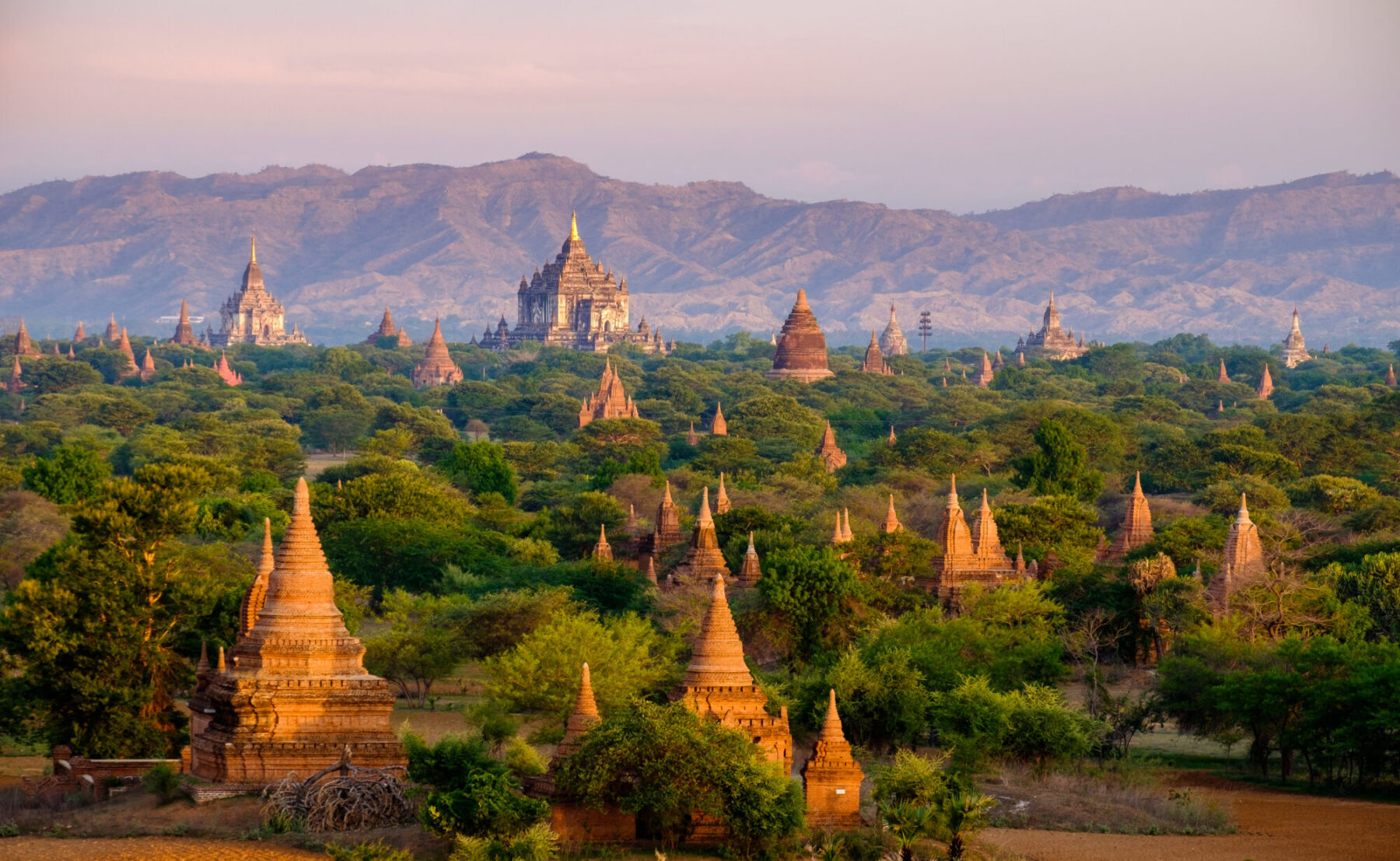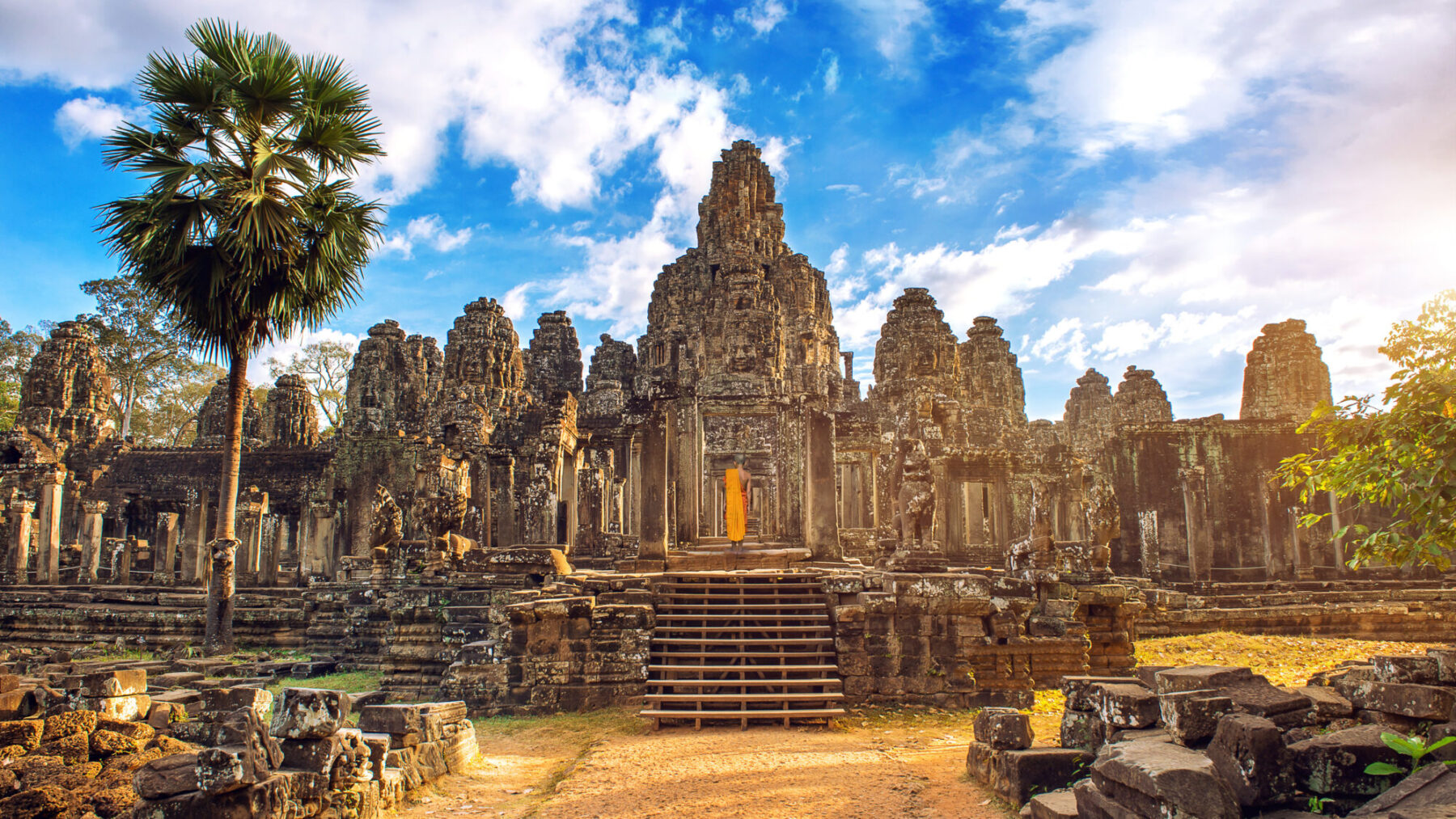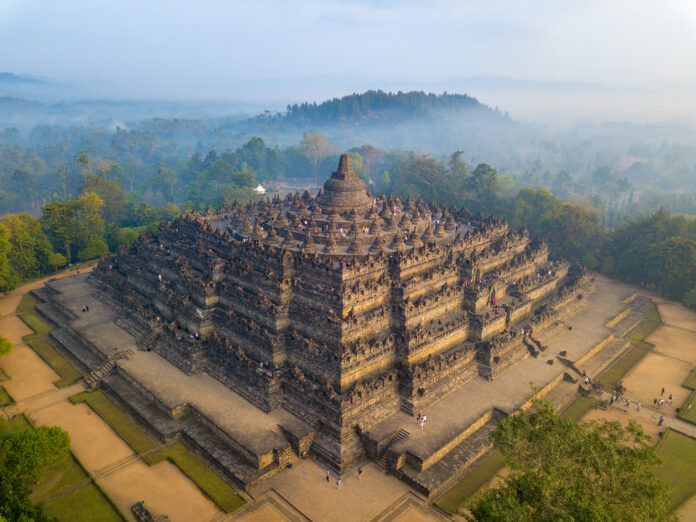BOROBUDUR
Central Java, Indonesia
Located on the Indonesian island of Java, Borobudur is the largest and most famous Buddhist temple in the world. The temple is believed to have been built over a period of 75 years in the 9th centuries by the kingdom of Sailendra. Nine platforms are stacked on each other; six squares and three circular. A dome sits on the top. The temple is decorated with 2,672 relief panels and 504 Buddha statues.
BAGAN
Mandalay Region, Myanmar
Mandalay Situated on the banks of the Ayeyarwady River, Bagan is home to the largest collection of Buddhist temples and ruins in the world. The capital of the Bagan Kingdom between the 9th and 13th centuries, the city comprised more than 10,000 Buddhist temples, pagodas and monasteries in its heyday. When the kingdom fell to the Mongols, Bagan was no longer a political centre, and instead became a centre for Buddhist scholarship. Today, more than 2,000 temples and pagodas survive.

ANGKOR WAT
Siem Reap, Cambodia
Angkor Wat is an enormous Buddhist temple complex located in northern Cambodia. It was originally built in the first half of the 12th century as a Hindu temple. Spread across more than 160 hectares, Angkor Wat is said to be the largest religious monument in the world. Its name, which translates to “temple city” in the Khmer language of the region, references the fact it was built by Khmer king Suryavarman II.

In Asian Geographic’s Issue No. 153, Religion is decoded as we delve into the major world religions. Covering Christianity, Buddhism, Islam, Hinduism and Sikhism.
This issue follows the rise and fall of these major religions as well as the practices and traditions that have stood the test of time. Journey through the history of these religions and gain a deeper understanding of the beliefs that inspire such deep devotion and faith in their followers.
Pick up your copy here!











